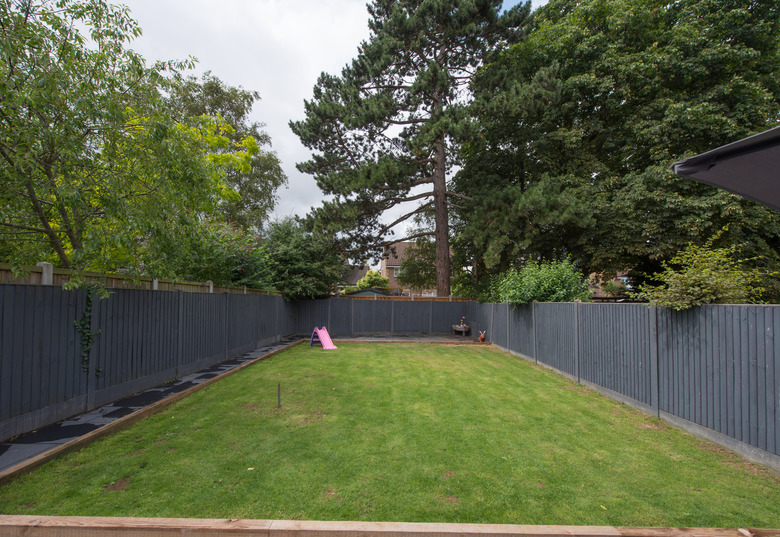Lawn Mowing Tips That Will Make You A Mowing Expert
Don't despair if your neighbor's professionally manicured lawn makes you green with envy. You can get the same lawn mowing results at your house without breaking the bank and hiring a pro. As long as you keep your mower in good shape and embrace a few lawn mowing tips, your lawn will look just as good as your neighbor's if not better. Although you may think you need to hire a professional lawn care company—it's easy enough to get the best lawn on the block yourself.
Choosing a Lawn Mower
If you want a great-looking lawn, you'll need the right tool for the job. There is a dizzying array of mower types and options from which to choose, but a few basics are all you need to get a mower that will work well for you.
Many homeowners keep things simple and accomplish their lawn care with a walk-behind mower. You can choose a mower that you simply push ahead of you or opt for a self-propelled unit that pulls itself along the grass while you guide it from behind. Self-propelled mowers are easier to use but do weigh more than push mowers and have extra features, which can mean extra maintenance.
If you go for a push mower, look for one with ball bearing wheels since they're easier to push. If you are looking at self-propelled units, choose a front-wheel-drive mower for flat lawns with lots of obstacles. This lets you tilt the mower slightly to lift the drive wheels and quickly maneuver around obstacles like trees and that little garden gnome your wife just had to have.
If your lawn is hilly, choose a rear-wheel-drive mower. This allows you to push down on the mower handle for a better grip without losing traction. The wheels that drive the mower will stay firmly planted on the ground, making hills easier to tackle. Unless you have extremely rough terrain, you likely don't need the expense of an all-wheel-drive unit.
If your lawn is larger than about 1/4 of an acre, a riding mower may be a better choice than one you walk behind. For most homeowners, a basic lawn tractor or rear-engine rider will do the trick. Both mow the lawn more quickly than a walk-behind mower, but rear-engine units are smaller and a bit more maneuverable than bulky lawn tractors.
Rear-engine mowers come with 30- to 33-inch decks, while tractors boast 54-inch decks. The bigger the deck, the larger the cutting surface and the fewer passes you'll need. Lawn tractors can prove difficult to maneuver around obstacles, however, and work best for wide-open lawns.
If you prefer an electric mower to a gas one, opt for one with a battery rather than an electrical cord. You can work around a cord if you have a small yard, but with large yards, a cord can be quite cumbersome under the best of circumstances and may prove to be completely impractical.
When buying a battery-powered mower, consider purchasing an additional battery. Having a fully charged extra battery handy ensures that you can get through the entire yard without a dead battery slowing you down. It takes several hours to recharge a lawn mower battery, making an extra battery the only way to avoid delays if your other battery dies unexpectedly.
Regular Mower Maintenance
If you've selected a quality lawn mower, you can expect it to last 10 to 15 years. Proper maintenance is required, however, to get the most from your mower. Your lawn will also look nicer and be easier to cut if you keep your lawn mower in good shape. Although you can give your mower a little TLC whenever you feel the need, it's imperative that you perform a quick service in the spring before your first mow.
Always begin any mower maintenance tasks by removing the spark plug(s) from the mower. This prevents it from starting unexpectedly while you're working. Next, turn the mower on its side and clean the bottom. Use a paint scraper or wire brush to remove any dried grass or residue from last year.
While you have access to the bottom of the mower, unscrew the bolt(s) that hold the cutting blade in place and remove the blade. If you have dull blades, you can replace them with new ones or sharpen what you have. To sharpen your mower blade, hold it in a vise and use a hand grinder to sharpen it. Wear safety glasses while you work and hold the grinder parallel to the blade's original edge. You can also have a mower repair shop sharpen the blade for you.
After working under the mower, turn it upright again and change the air filter. Remove the filter cover and replace the paper filter with a new one. If your mower has a foam filter, wash it in warm water. Allow it to dry and then cover it with about 2 tablespoons of oil before putting it back.
Next, reinstall your spark plug(s) and start your mower before changing the oil. Run the mower for 10 or 15 minutes to warm the oil. Detach the spark plug again and then prop up the mower so you can unscrew the oil drain plug from the bottom of the engine. Catch the used oil in a container and dispose of it properly.
Change the oil filter on your mower (if it has one) while it's empty and wipe down the dipstick. Fill your mower with oil per the manufacturer's instructions. Most mowers take SAE 30 oil, but the manufacturer may recommend something different for heavy use or cold weather use.
Any maintenance task performed under the mower, such as changing the blade, is best left to a professional if you have a riding mower. Riding mowers are heavy, and working under them can be dangerous.
Proper Lawn Mowing Height
After giving your mower a little preseason care, set the blade height to 3 or 4 inches. It's tempting to set the blade lower so you don't have to mow as often, but it's hard on your lawn to do so. For starters, a low mower blade may scalp the yard on hills and inclines, literally pulling out clumps of grass and leaving a bare patch behind.
Cutting your grass too short also makes the plant work harder. The longer the grass blade, the deeper its roots. Longer roots make it easier for grass to stretch more deeply into the soil for water and nutrients during dry weather. If you cut the grass too short, the plant will focus on regrowing the leaf rather than extending its roots and forming a good base.
Taller grass also helps prevent weeds. It creates just enough shade that some weeds will have a difficult time establishing themselves. Longer grass blades are a chemical-free way to help minimize unwanted plants in your lawn.
Timing Is Everything
You may be ready for a lawn mowing, but that doesn't mean your grass is ready. Remember that grass is a living thing, and being cut is essentially being wounded. This wound is stress enough on the plant without adding the afternoon heat to the mix. Your grass will fare better if you mow early in the morning or evening—which, in the summer heat, is probably the best time of day to do lawn care tasks anyway.
It's also very important to mow your grass only when it's dry. Wet grass clippings clump together, trapping moisture and encouraging rot and disease. Wet grass doesn't cut evenly either, so your lawn may look ragged and uneven if you mow before it's dry.
Like timing, frequency matters too. Lawn mowing should be done once a week during the summer and twice a week in spring and fall. During mild winters, you may need to mow every two weeks as well.
Leave Your Clippings
If you want your lawn to look nice, you may find it tempting to rake up or bag the clippings. Resist this urge. If you leave the grass clippings, they will decompose and can provide up to 25 percent of the fertilization your lawn needs. A fertilized lawn is a healthy lawn.
Homeowners often express concern that leaving grass clippings on the lawn can contribute to thatch buildup. This isn't the case, however. Thatch is a layer of dead grass stems, fallen leaves and old plant roots. Grass clippings themselves decompose rather quickly and don't contribute to thatch buildup.
Change Mowing Directions
Do you ever find yourself bogged down by routine and in need of a change? Your grass may feel the same. When you perform the same mowing patterns every time, you risk creating unsightly ruts and compacting the soil in your yard with the mower's wheels. Your grass will also lean in the direction you mow and may not stand upright if it is mowed in the same direction again and again.
To prevent these problems, simply change up your lawn mowing routine. If you mow parallel to your house one week, mow perpendicular to it the next week. This small change can make a big difference in your lawn's appearance.
General Do's and Don'ts
There are a few general rules you should always follow when you mow. One is to exercise extreme caution when mowing on hills and slopes. To avoid tipping, always use a push mower rather than a riding mower on hills and slopes steeper than 15 degrees. When mowing a hill, move back and forth rather than up and down the hill and never mow a hill if the grass is wet.
You can greatly reduce the amount of trimming you do if you learn to edge your lawn with your mower. If you need to edge a flat surface like a sidewalk or patio next to your grass, place the wheels of your mower directly on the edge of the surface and mow along the edge. This trick doesn't work with fences or other obstacles, but it's great for flat surfaces like driveways.
Remember to mosey when you mow. Mow too quickly and you'll leave skippers and uncut blades. Push or drive your mower at a steady but slow pace to ensure clean, even cuts. It's easy to get overwhelmed and feel rushed when mowing a large, open space, but take a deep breath and remind yourself that slow and steady wins the race.
Listen to your mower as you work. If you hit a particularly thick patch of grass, you'll hear your mower's engine bog down. If you do, slow down so your mower blade is dealing with only a few grass blades at a time. The mower will tell you if you're moving too fast.
Don't get too close to trees when you mow. Doing so can damage the bark of the tree, inviting insects and diseases into the tree. No matter how well you mow, your lawn won't look nice if the trees are all sick and dying. Beware of tree roots as well. Tall roots can damage or dull your mower blade, so avoid mowing over them.
References
- Blain's Farm & Fleet: Lawn Mower Maintenance Tips & Tune-Ups
- Good's Tree and Lawn Care: Our Best Mowing Tips
- Gardeners' World: Seven Lawn Care Tips
- Reader's Digest: 7 Tips to Mow Like a Pro
- University of Massachusetts Amherst: What is Thatch?
- Briggs & Stratton: What Type and How Much Oil for my Lawn Mower?
- The Home Depot: Lawn Mower Maintenance
- Lawn Doctor: Lawn Mower Maintenance Tips
- Popular Mechanics: The Lawn Mower Buyer's Guide: Everything You Need to Know to Buy the Right Mower



